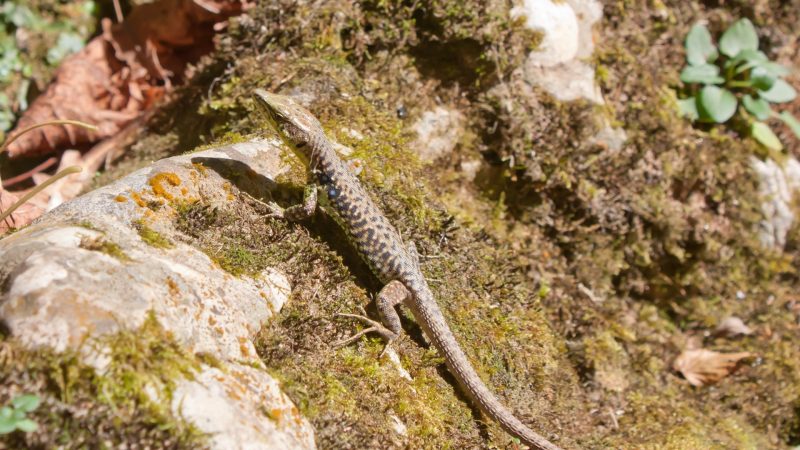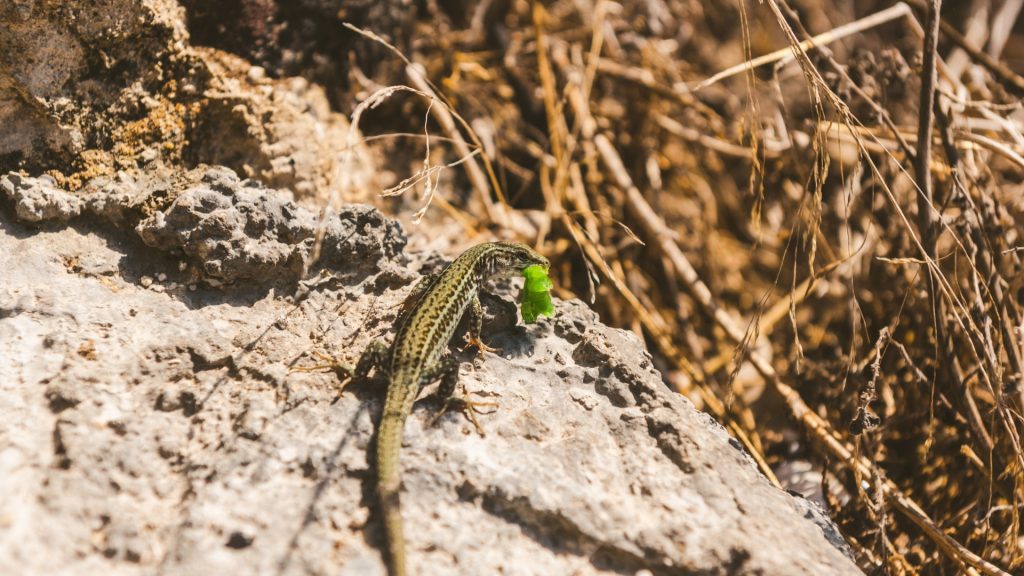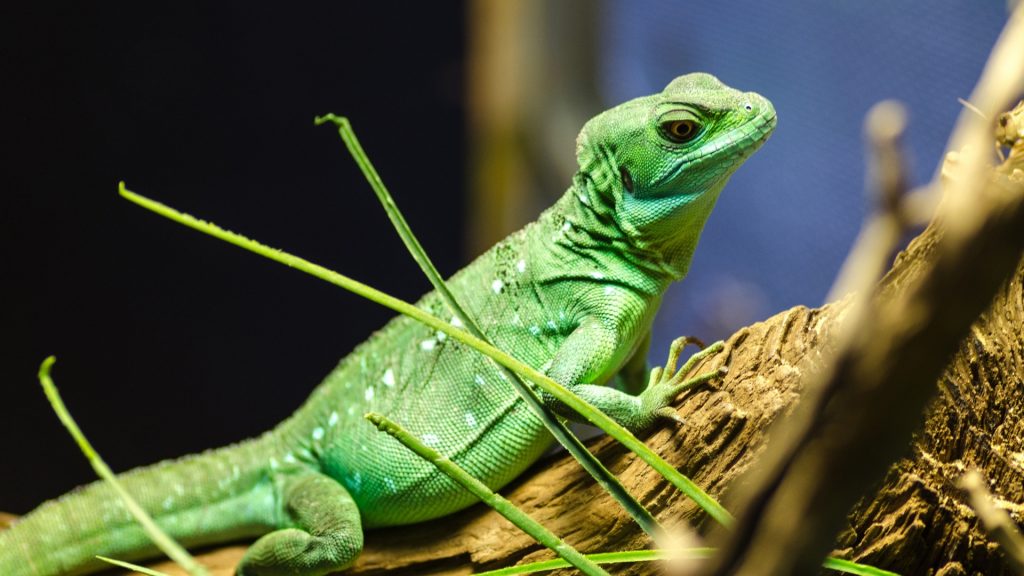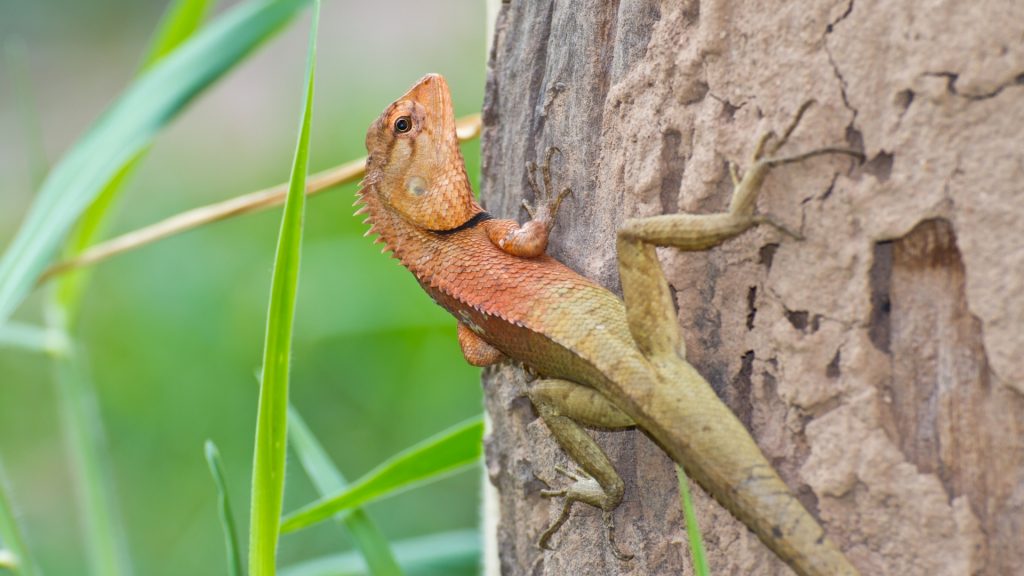Lizards can be spotted rummaging through brick walls and pathways in the hopes of avoiding potential predators. With all the energy they radiate from their constant movements, you begin to wonder, what do backyard lizards eat?
What do backyard lizards eat? Depending on the breed of reptile, lizards may be carnivorous or omnivorous. Ants, worms, mites, cockroaches, spiders, and flies are examples of animals that they may eat. Snails, slugs, crickets, caterpillars, and other small invertebrates may also be eaten. They may also eat vegetables and fruits such as lettuce, peas, water crest, cucumber, sweet potatoes, squashes, and berries.
On the other hand, baby backyard lizards love to devour small insects like pinhead crickets, bottle fly spikes, wasps, and fruit flies. However, they can also eat little amounts of fruits and vegetables. For the bigger types of lizards, they can consume animals such as mice and birds or even baby snakes and their eggs.
In the following text, we will cover more about their diet, predation style, appearance, and the things that attract them to visit and stay in gardens and yards.
What Attracts Lizards to Your Yard?

Lizards may frequently visit your yard due to the presence of numerous hiding spots. You may have a lot of green grasses, heavy vegetation, and ground covers where they can lurk and conceal themselves from possible predators. Moreover, you may also have big rocks, tree barks, and fallen logs that can provide shade and shelter for their long and slender bodies.
Other than that, they may be attracted to your garden as it may be a haven of their favorite food sources such as worms, spiders, ants, flies, caterpillars, crickets, and other small insects. Additionally, your garden has fruits and leafy greens like berries, peas, and lettuce.
Other possible reasons why they frequently march on your yard include the prevalence of water sources, shelter options like bricks, old tins, and PVC pipes, or improvised ladders such as plant vines and creepers.
Are Lizards Bad to Have Around Your House?
The presence of lizards around your house is not a bad thing. These reptiles do not cause harm to humans as they do not usually bite or injure them, except when triggered or put in dangerous circumstances. They may even help deter and eliminate the insect pests that have continued to infest your surroundings.
Related: How To Get Rid of Lizards in Your House and Around the Yard Without Killing Them
Backyard Lizard | Diet and Predation Style
The diet and predation style of backyard lizards may depend on the reptile species as the majority of them are either carnivores or omnivores. Thus, they can eat animal meat and flesh, or they can mix it with green herbs, vegetables, and fruits.
What Does Adult Backyard Lizard Eat?
The food source of adult backyard lizards may either be meat, vegetation, or a mixture of both. For lizard species that are carnivores, their favorite diet may include grasshoppers, ants, cockroaches, worms, flies, spiders, mites, crickets, snails, caterpillars, and other small insects.
If the adult lizard is large, it may consume bigger animals such as birds, baby snakes, and mice. Moreover, those who ingest fruits and vegetables may take on cucumber, berries, lettuce, peas, and sweet potatoes.
On the other hand, if adult backyard lizards cannot find food to eat, they may be left with no choice but to feed on lizard eggs just to survive from intense starvation.
Do Backyard Lizards Eat Vegetables?
Backyard lizards may consume vegetables like lettuce, peas, cucumber, water crest, and pak choi, as well as fruits such as berries and squashes. They may also feed on your plant’s leaves. So, do not be surprised if you see bite markings and holes in the natural foliage of your backyard vegetation.
What Do Backyard Baby Lizards Eat?
Backyard baby lizards love to munch on small insects such as pinhead crickets, bottle fly spikes, ants, and flies. They also eat vegetables and fruits but only on rare occasions.
Do Lizards Eat Dead Insects?
It is uncommon for lizards to eat dead insects because they prefer to consume live animals and invertebrates. They prey on living insect pests. So when they see dead animals, they will probably just pass through them.
Do Lizards Eat Black Widows?
Known to be North America’s most venomous spider, black widows are popular for their capacity to poison and produce injury to their predators. Thus, other reptiles would not eat or go near them as the toxins found in their bodies can verily cause stomach discomfort.
However, this scenario is inapplicable for alligator lizards. These reptiles can neutralize and counteract the toxins produced by the black widows as they have a significant tolerance to it.
Related: How to Get Rid of Texas Horned Lizards | Safe and Effective Techniques
How Does Lizard Catches Its Prey?

Lizards use their tongues in catching their prey. They do this by exploring their long and sticky tongues outside of their mouths in a projectile motion. The tip of this mouth part has a mucus pad that can efficiently stick and adhere to the prey. It has sensory cells that detect food, mating partners, and predators using particular scent particles. Also, their tongues have strong protractor muscles that allow them to expand extensively.
Furthermore, lizards also utilize various hunting techniques, such as the sit-and-wait technique, where they stay in one location and wait for their victims to pass. Also, their active foraging involves them moving about at a slow pace while observing and looking for prey.
What’s the Approximate Size of a Backyard Lizard?

Depending on the type and breed of lizard they can be as small as 0.8 inches to as large as 3 meters, such as the famous Komodo dragon. However, most lizard breeds are typically fairly small creatures.
Where Do Common Lizards Live?
Common lizards mostly reside on the ground, but they may go up and climb through logs, tree trunks, rocks, and low-lying plants. Their common habitats include marshes, swamps, moist forest environments, moorlands, meadows, sand dunes, and heathlands.
They prefer to live in areas with warm or tropical weather, but they can adapt to different climates and temperatures. Also, they want an environment where they can adequately hide and conceal themselves from predators or a place where sufficient food and water are readily available.
How Long Do Backyard Lizards Live?
The lifespan of backyard lizards may depend on their diet and lifestyle. Those with a “healthier” mode of living can live up to ten years, but those with not a “not-so-healthy” routine can live for at least a year. This may, however, depend on other factors such as extreme weather conditions and the prevalence of predators.
Related: How to Get Rid of Argentine Black and White Tegus | Humane and Effective Solutions
Do Backyard Lizards Bite?

Normally, backyard lizards do not bite or cause injury to humans. But when put in a perilous situation, they will not hesitate to bite actual or imminent attackers. They have numerous forms of defense mechanisms, and biting is one of them.
These bites are often non-poisonous and harmless. But if struck by venomous lizards such as Gila monsters, affected individuals may experience pain, discoloration in the area of the bite, swelling, body weakness, profuse sweating, and in extreme cases, a significant drop in blood pressure.
What Can You Feed a Lizard in Your Backyard?
The following items are the food items that can be fed to your backyard lizards:
- Live insects such as grasshoppers, crickets, flies, ants, cockroaches, and other tiny invertebrates.
- For omnivores: Vegetables and fruits like cucumber, pak choi, lettuce, peas, sweet potatoes, berries, squashes, and other leafy herbs
- Worms and caterpillars.
- For lizards that are large in size: mice, small birds, baby snakes, and their eggs.
- Commercial lizard food: Typically high in protein and rich in calcium and other nutrients.
- Reptile multivitamins such as vitamin D3 and calcium for the optimum nutrition and well-being of backyard pet lizards.
- In some cases, certain breeds of lizards may consume meat from fish, chicken, shrimp, turkey, and crab but in a chopped, cut, or minced form.
Summary
Backyard lizards are not only meat-eaters. They can also consume various fruits and vegetables such as lettuce, berries, sweet potatoes, pak choi, and water crest. Not only that, but they may also feed on your backyard plants and herbs.
So, do not be surprised to discover bites and holes in your garden foliage. This is one of the key reasons why these reptiles want to stay in this area—the abundance of food within their sight while still having appropriate hiding locations from prospective predators.
List of Sources
Londeree, N. Garden Good Guys – Lizards. University of California – Agriculture and Natural Resources.
Christy, M. T., Kirkpatrick, W. Oriental Garden Lizard (Calotes versicolor). Government of Western Australia – Agriculture and Food.
Lizard Hunting Styles Impact Ability To Walk, Run. (2008). Ohio University.
- How to Get Rid of Turtles | Proven Long-Term Solutions! - August 26, 2023
- How to Get Rid of Kingsnakes | Easy & Humane! - August 26, 2023
- How to Get Rid of Northern Water Snakes | Best Solutions and Preventative Measures! - August 19, 2023
